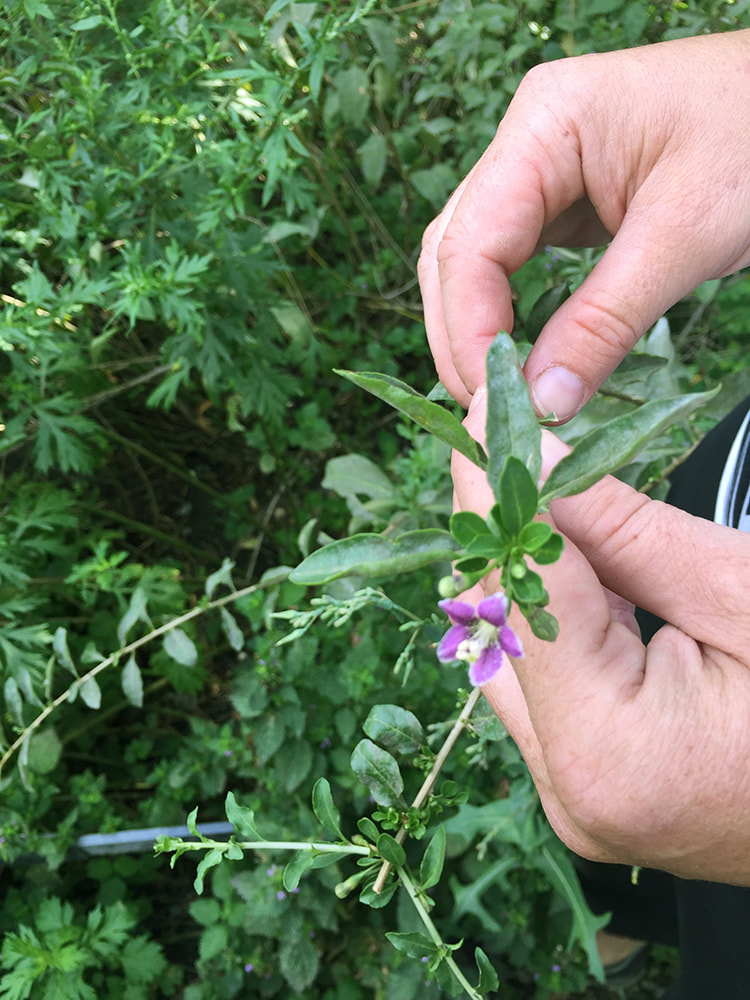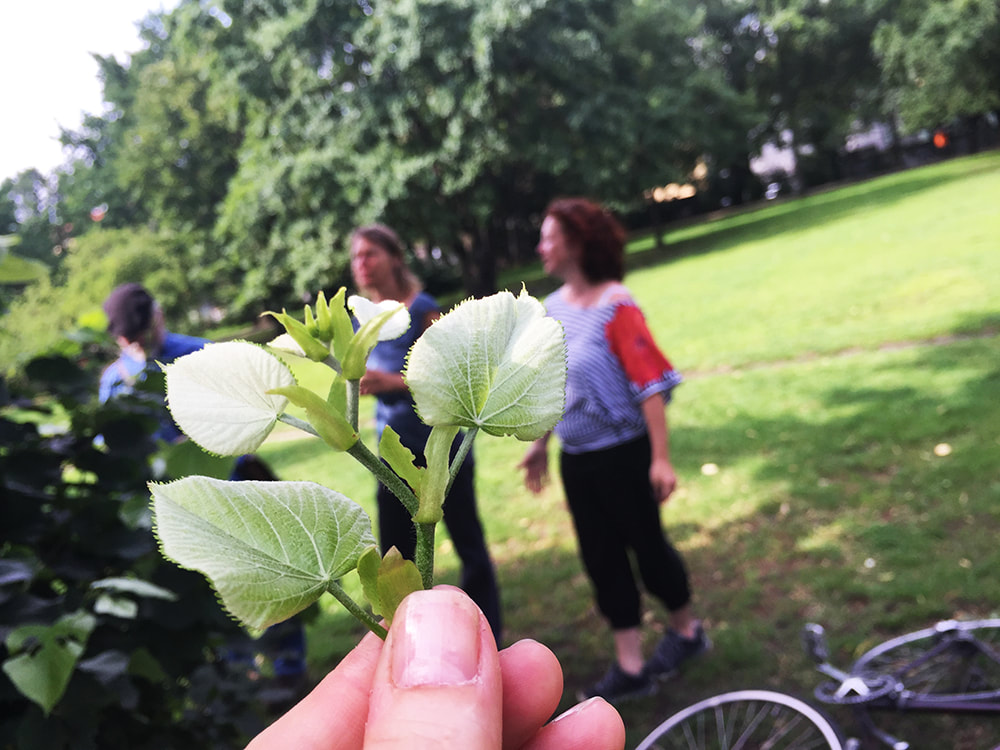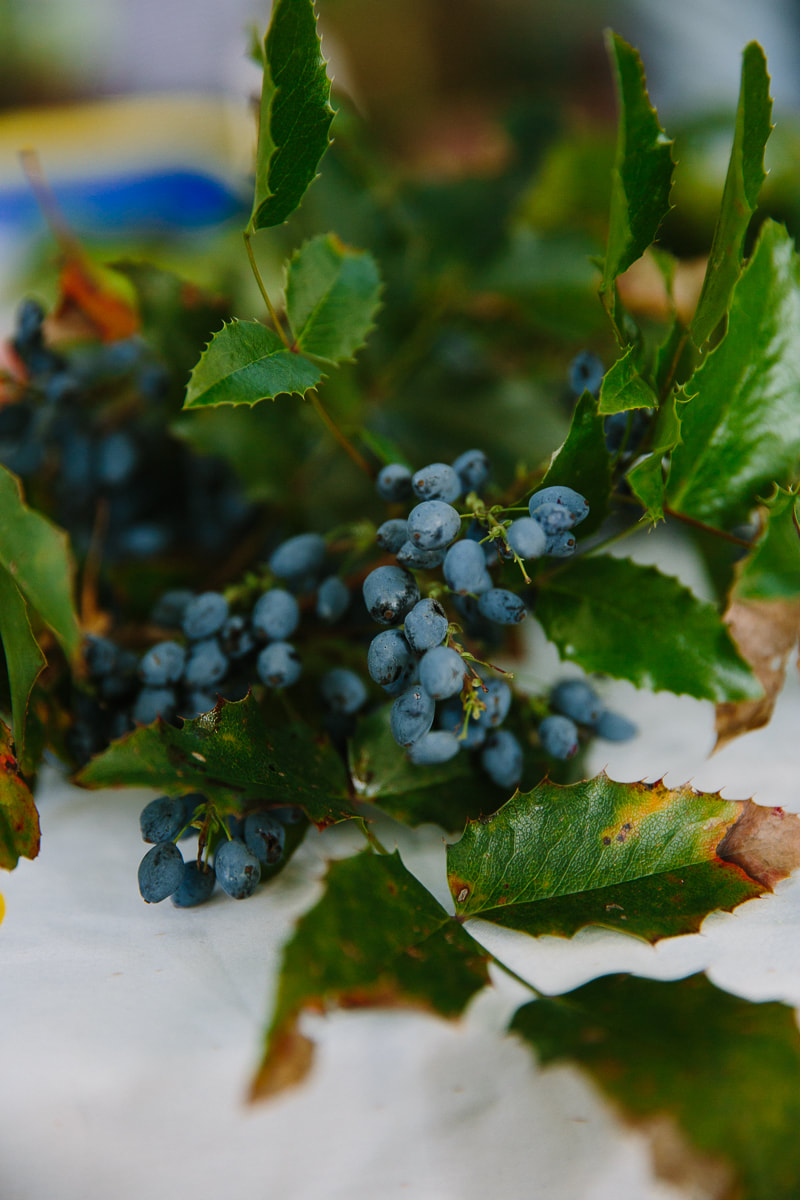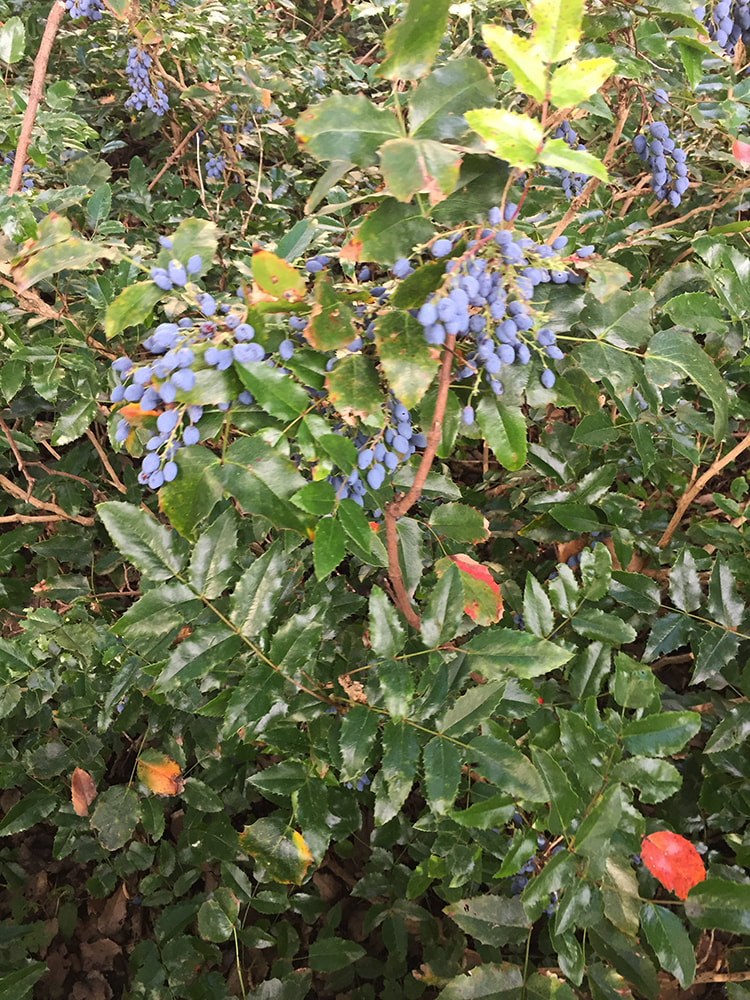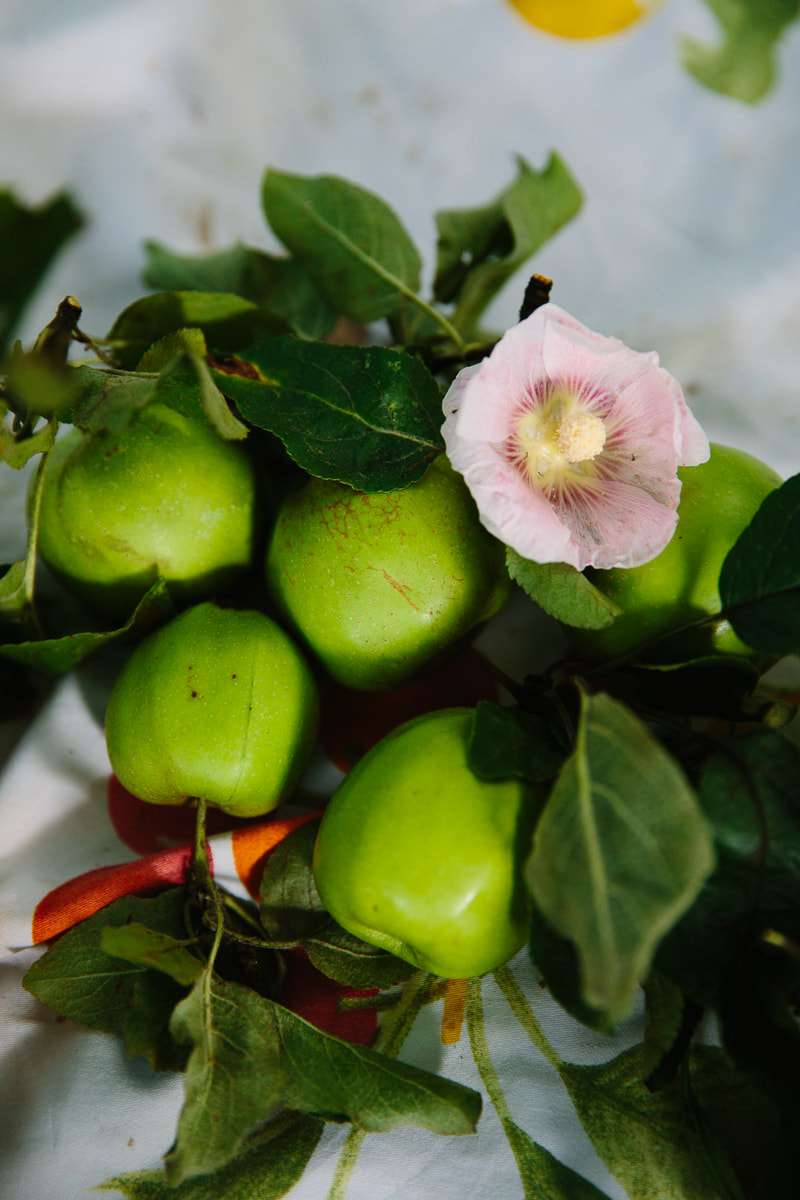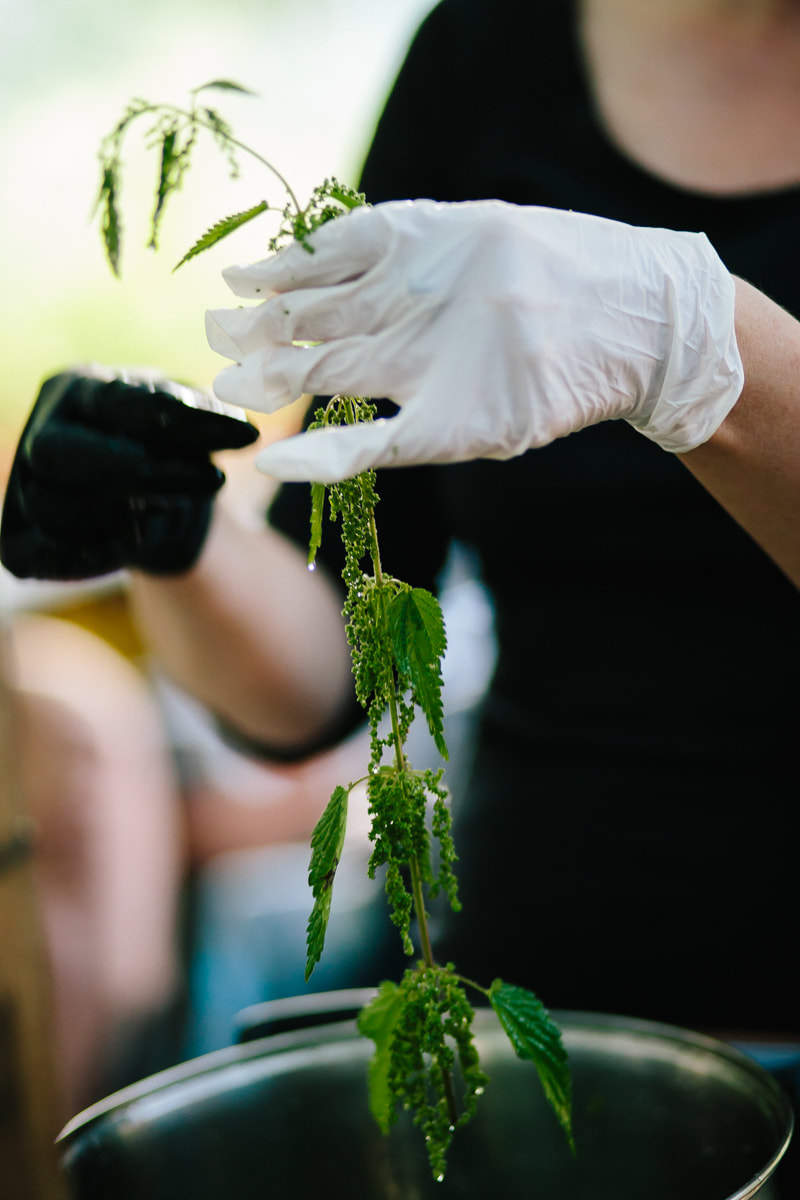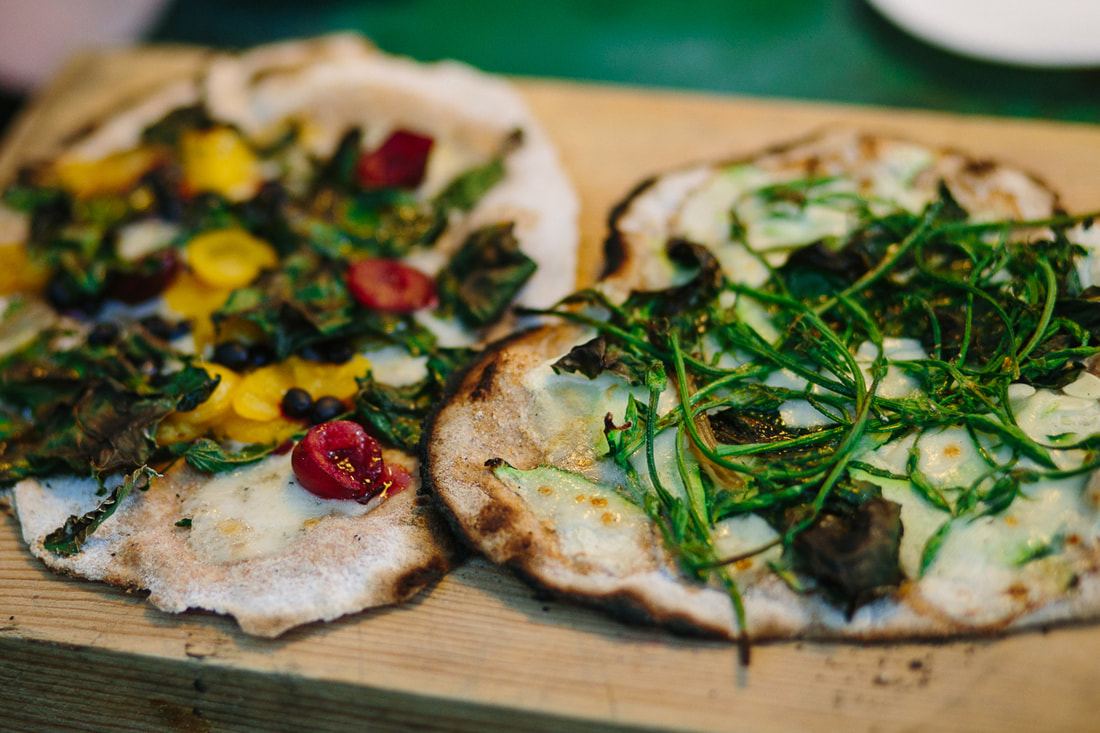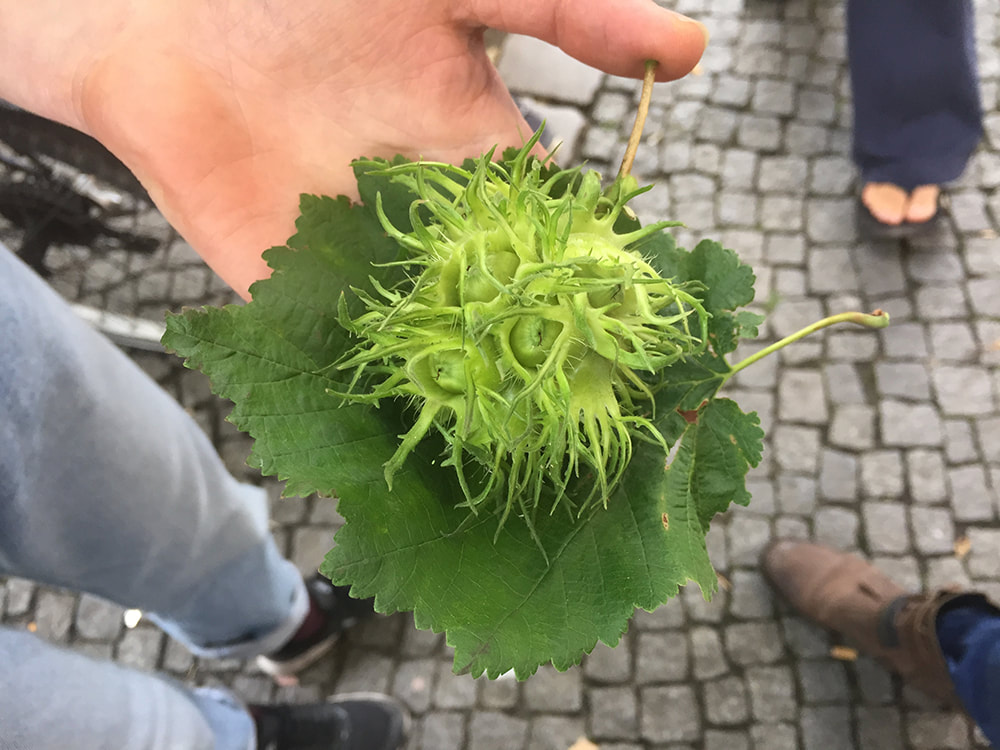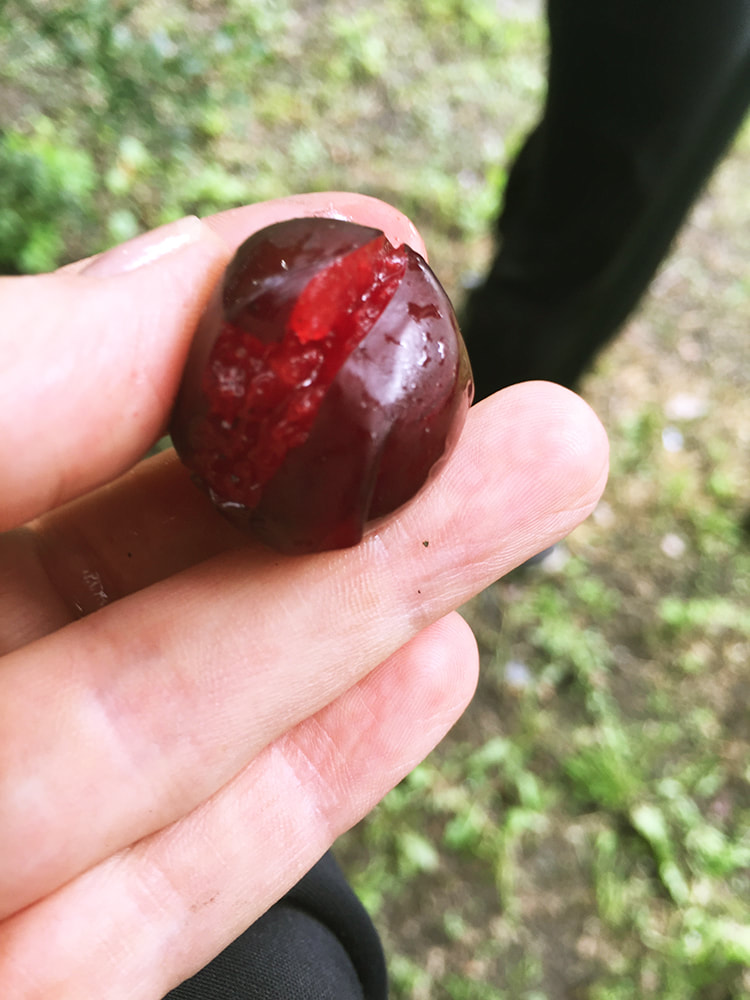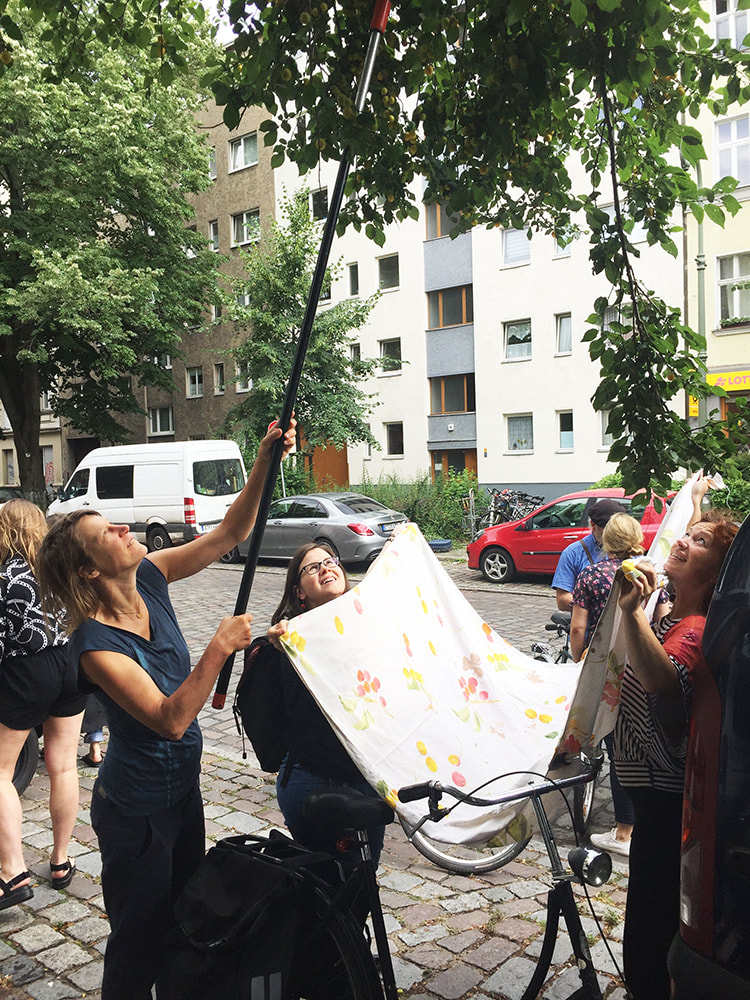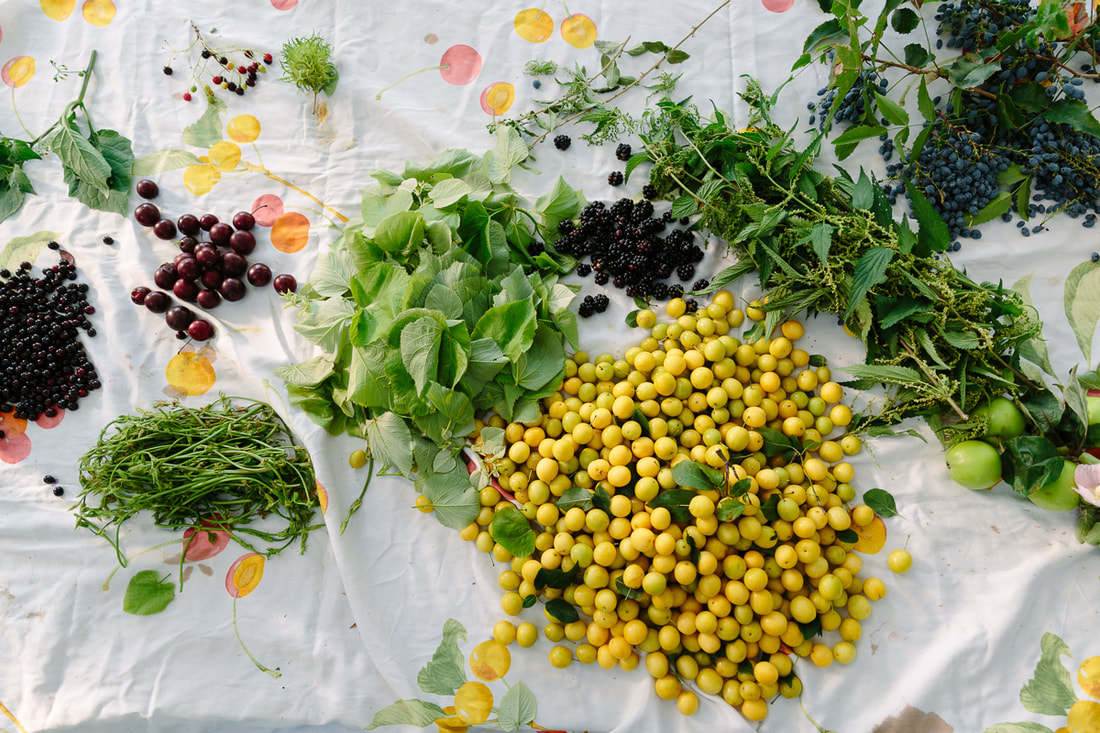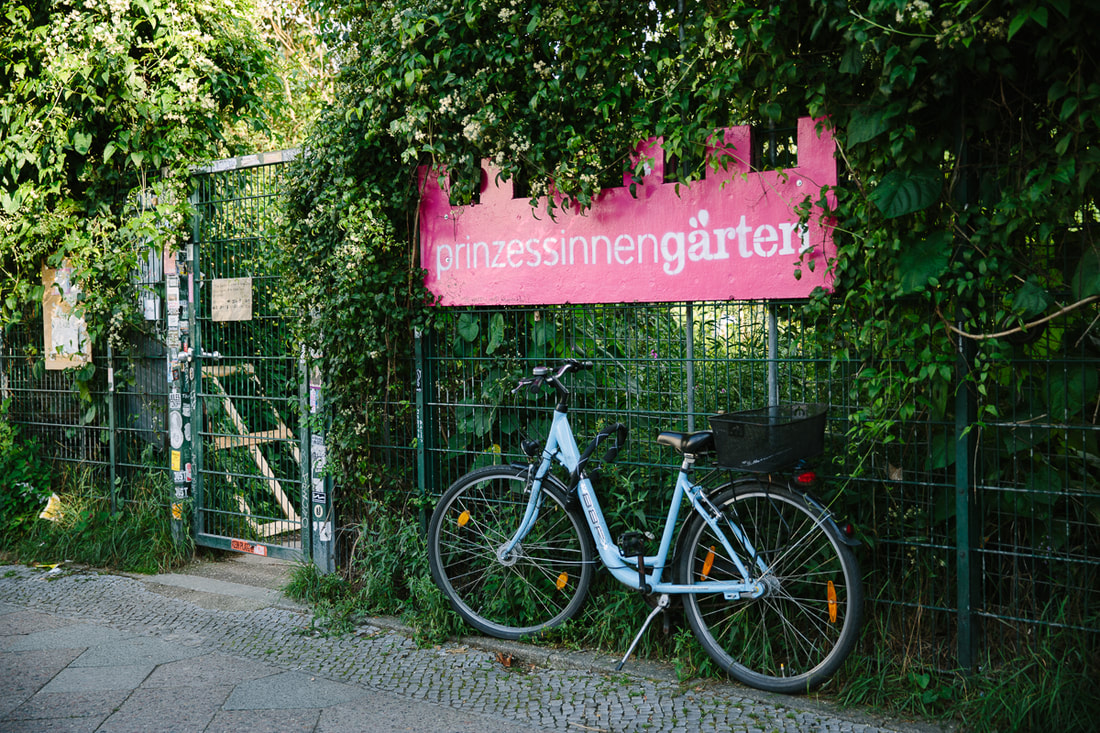Deutscher Text unten...
MUNDRAUB
(Shoplifting the Wild)
|
Did you know that there are many spots in our urban spaces, with trees and bushes full of fruit for you to harvest? Magda Zahn took us through a great tour through Kreuzberg, Berlin, where we found curious and delicious eatable treasures. Afterwards we cooked up a 3 course menu with our harvest at the well-known urban garden project Prinzessinnengärten.
The philosophy of 'Mundraub' (Shopilifting the wild) is certainly adding a valueable resource for our Think-Tanks topic 'Forgotten Taste'. here are some photos documented by Nora and Kit. The research will be published in our book in the winter. Madeleine Zahn has studied agriculture and nature protection at the HNE Eberswalde. She continued to extend her knowledge about eatable wild plants in the immediate nature in independent studies. She works as a project manager at the initiative mundraub.org.
Linde (Tilia). There is a summer-linde and a Winter-linde. Winter-linde has smooth leaves, where as the summerl-linde carries a soft fur on its leaves. The young leaves and shoots are wonderful in salads, and if they are larger, you can make dolmas out of them. The usage of the blossom for tea and sirup is more commonly known. The Lindenbaum defines Berlin's cityscape and in the month of May it's smell too.
-----Görlitzer Park-----
We made the most delicious pizzas from our treasures. The guys at Prinzessinengärten fired up the Pizza oven for us, which of course, added the extra flavor. Here you can see hops sprouts, nettle leaves, plum cherries and mirabelles.
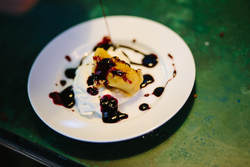
Desert was out of this world. We made sirup from the many mirabelles from Reichenberger Street. But we needed some substance. There was some polenta around, so we simply used that. Here with vanilla quark whipped cream and the yams from the mahoni berry and the hackberry.
|
Corylus colurna (Turkish hazel or Turkish filbert) is native to
southeast Europe and southwest Asia, from the Balkans through northern Turkey to northern Iran. ----- Waldemarstrasse----- 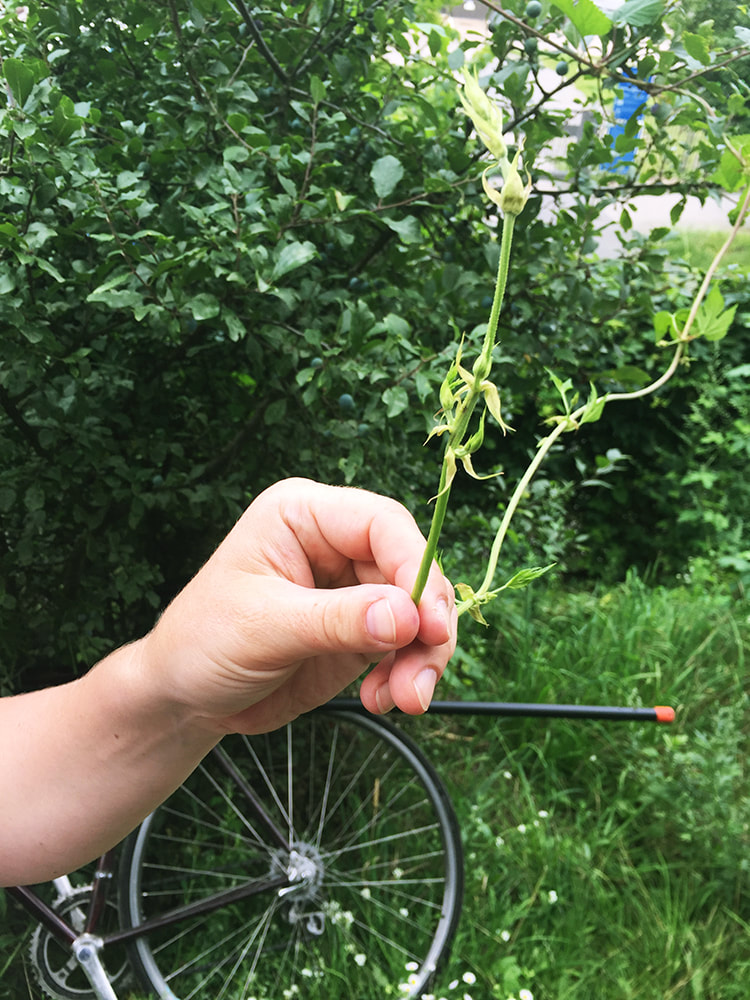
Hops Humulus lupulus are used primarily as a flavoring and stabilizing agent in beer, to which they add bitter, zesty, or citric flavours. The young fresh sprouts, like here, can be quickly immersed in boiling water, and eaten in salad or on pizza. The hot water takes of the rough little hairs.
-----Former Trainrails behing Görlitzer Park----- Cheery Plum (Prunus cerasifera) are small trees reaching 8–12 m, sometimes spiny, with glabrous, ovate deciduous leaves. It is one of the first trees to flower in spring in Northern Europe, often starting in mid-February before the leaves have opened. The flowers are white or pale pink and the fruit is an edible drupe, 2–3 cm in diameter, ripening to yellow or red from early July to mid-September. The cherry plum is a popular ornamental tree for garden and landscaping use, grown for its very early flowering.
-----Wiener Strasse----- Fishing for mirabelles.
-----Reichenberger Strasse----- |



